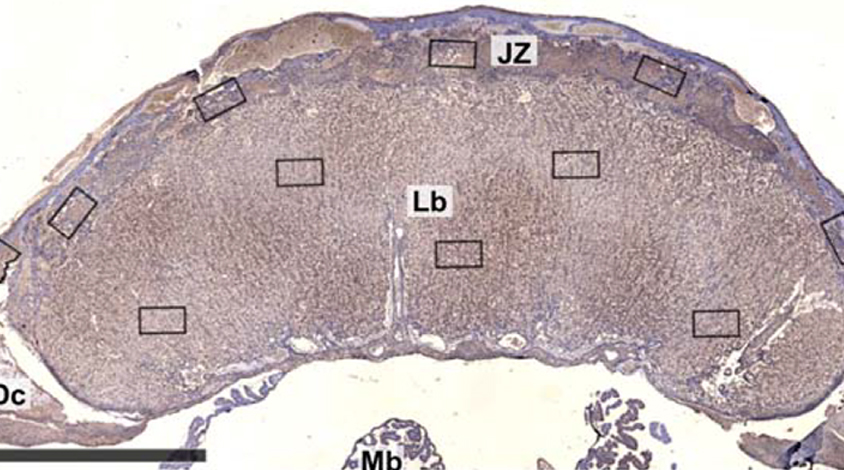
THIS ARTICLE IS MORE THAN FIVE YEARS OLD
This article is more than five years old. Autism research — and science in general — is constantly evolving, so older articles may contain information or theories that have been reevaluated since their original publication date.
Infecting pregnant rats with group B streptococcus triggers inflammation in the fetal side of the placenta, but only in male fetuses. The males go on to develop brain and behavioral features reminiscent of autism.
Researchers presented the unpublished results today at the 2016 Society for Neuroscience annual meeting in San Diego.
The findings add to mounting evidence linking maternal infections to autism risk, says Marie-Julie Allard, a graduate student in Guillaume Sébire’s lab at McGill University in Montreal, Canada, who presented the work.
The results also offer clues about the skewed sex ratio in autism. The condition is diagnosed in five boys for every girl.
Strep B bacteria can pass from mothers to their infants during delivery and have dangerous effects. Doctors screen for the infection in the late stages of pregnancy and prescribe antibiotics to prevent this risk. But little is known about the effects of strep B on the developing fetus.
Allard and her colleagues previously showed that male rats exposed to strep B in the womb socialize less than unexposed males do. The exposed rats also have an unusually thin corpus callosum, the tract of nerve fibers that connects the left and right hemispheres of the brain. Abnormalities in the corpus callosum are linked to autism.
In the new work, the researchers showed that strep B infections trigger inflammation in the maternal side of the placenta of both male and female fetuses. However, this inflammation extends to the fetal side of the placenta only in male fetuses.
The fetal side of male placentas shows high levels of interleukin 1-beta (IL-1 beta), a marker of inflammation. Male fetuses also show increased blood levels of IL-1 beta levels.
The findings suggest that strep B infections during pregnancy trigger an inflammatory response that is more pronounced in male fetuses than in female ones.
Blocking only the inflammatory response would not address the infection, so Allard and her colleagues plan to test the combination of an antibiotic with an anti-inflammatory drug in pregnant rats with strep B infection. They are also using magnetic resonance imaging to look for brain differences that correlate with behavioral features in the rats.
For more reports from the 2016 Society for Neuroscience annual meeting, please click here.
By joining the discussion, you agree to our privacy policy.